Shopify vs PrestaShop: Which Platform Would Be the Best 2024?
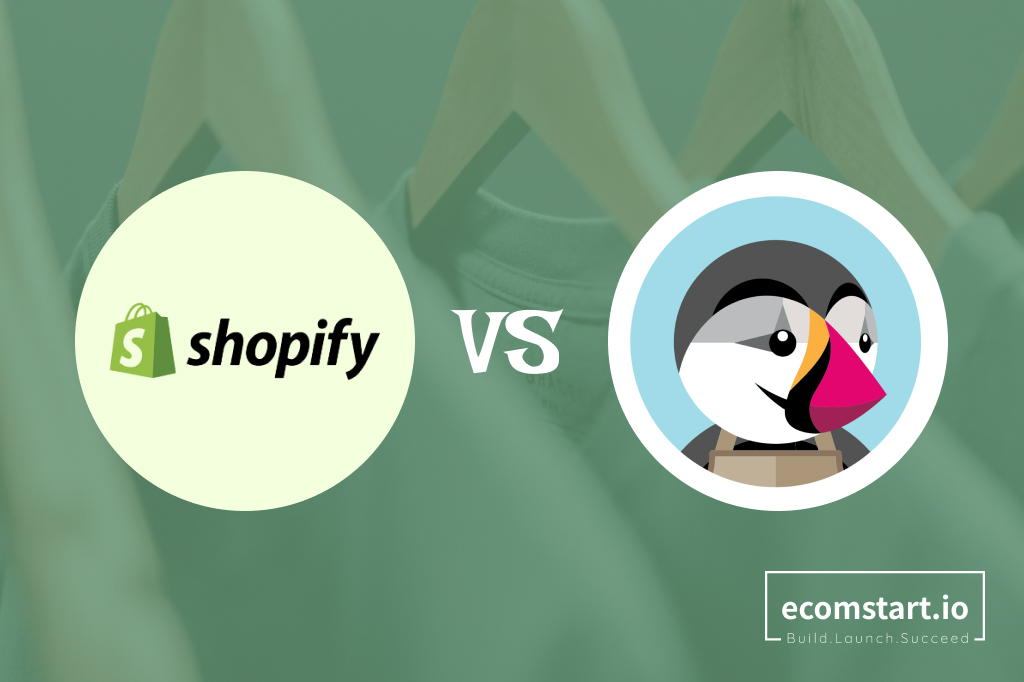
Picking the right platform is very important as you start your e-commerce path. Two of the best e-commerce platforms are Shopify and Prestashop. Each has its pros and cons. This complete guide goes into great detail about the battle of the titans: Shopify vs PrestaShop.
We at eComstart will equip you with the knowledge to make an informed decision through this in-depth comparison:
- What do you need to know about PrestaShop vs Shopify?
- Shopify vs PrestaShop: Full comparison
- Shopify or PrestaShop: Making the right choice
Now, let’s look more closely at the better features these two e-commerce platforms can offer their users, starting with the big picture and working our way down to the specifics.
1. Shopify vs PrestaShop: An Overview
In this section, we’ll help you understand the big picture of Shopify and PrestaShop by giving you a quick rundown of who they are, what they offer, and how they vary in the PrestaShop vs Shopify comparison table.
1.1 Shopify: A hosted powerhouse
Shopify is a hosted e-commerce platform and software-as-a-service (SaaS) solution. With this development direction, Shopify handles server infrastructure, security, and software updates so you can run your store, add products, process orders, and most importantly, grow sales.

With Shopify’s easy-to-use interface, setting up your store is as simple as dragging and dropping pre-made parts into place.
Shopify also has many built-in features that can help you get back customers who left items in their shopping carts. Need better shipping, email marketing, or customer rewards? Shopify’s extensive app store lets you customize your store and give customers a unique e-commerce experience.

1.2 PrestaShop: The open-source champion
E-commerce platform PrestaShop is free and open-source. Unlike Shopify’s hosted option, PrestaShop gives you complete control. You can change the base (web hosting) and roof (design).
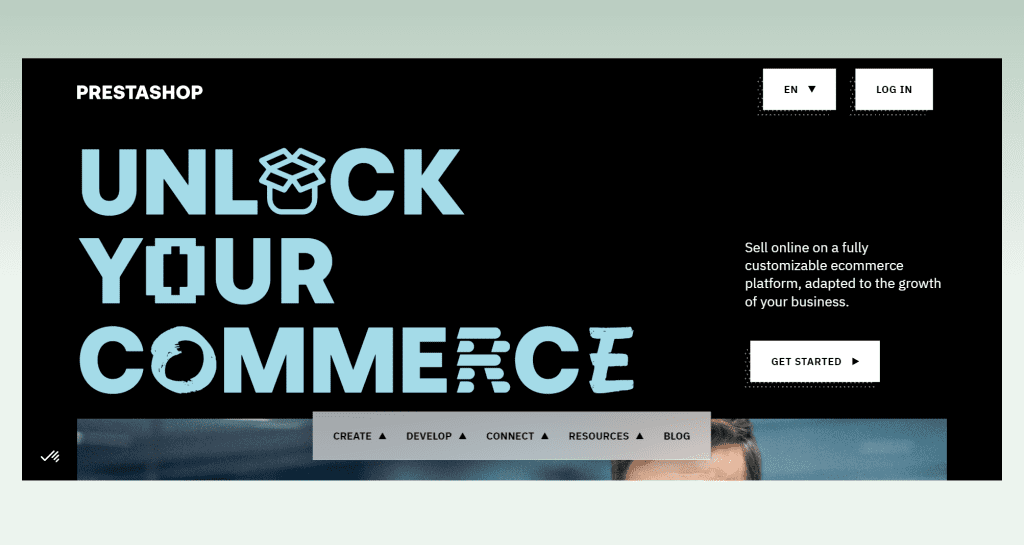
With this freedom comes the duty of finding your web host and putting PrestaShop software on your server. Even though PrestaShop has tools and guides to help with installation, it is still best to have some technical knowledge.
Unlike Shopify, which automatically updates software, you must maintain it and install security updates on time to protect your store.
1.3 Critical differences between Shopify and PrestaShop
Here’s a quick comparison highlighting the core distinctions:
| Feature | Shopify | PrestaShop |
|---|---|---|
| Target audience | Beginners, SMBs, and businesses looking for ease of use. | Tech-savvy users and businesses seeking high customization & control. |
| Pricing model | Monthly subscription ($29-$399+).Commission fees.Transaction fees. | Free to use platform.Web hosting & domain costs (variable).Transaction fees. |
| Ease of use | Easy, drag-and-drop interface. | Moderate learning curve; some technical knowledge is required. |
| Customization | Theme customization with limited code access. | Highly customizable with full code access. |
| Design & themes | Paid and free themes. | Free and paid themes, a more comprehensive selection. |
| Security | Shopify manages and auto-updates frequently. | Self-managed security updates. |
| E-commerce features | Built-in features and apps for additional functionality. | Modules are needed for most features. |
| Apps and integrations | It is a vast app store with a wide range of extensions. | Smaller selection of modules, often with development costs. |
| Scalability | Highly scalable. | Requires manual server upgrades for high traffic. |
2. PrestaShop vs Shopify: Full Comparison
Now that we know the main differences between PrestaShop vs Shopify, let’s look at each vital part to compare Shopify to PrestaShop in real life.
2.1 Pricing
Shopify pricing
Recently, Shopify has had six different price plans:
| Shopify Pricing plans | Pay Monthly | Pay Yearly | Description |
|---|---|---|---|
| Basic Shopify | $39 | $29 | It is suitable for solo entrepreneurs. |
| Shopify | $105 | $79 | It is ideal for small teams. |
| Advanced Shopify | $399 | $299 | It is perfect for your business scale. |
These plans include essential e-commerce features and functionalities. Additionally, Shopify charges transaction fees for each sale processed through their platform. These fees vary depending on your chosen plan.

Depending on your selected plan, these fees range from 0.5% to 2%. You won’t have to pay these fees using Shopify Payments instead. Remember that credit card rates will still be between 2.4% and 2.6%, plus an extra 30 cents per transaction, even if you use Shopify Payments.
There are membership and transaction fees, but you should consider any extra costs with apps and add-ons from the Shopify App Store. These fees change based on which apps or add-ons you choose to improve your store. Also, if you select a payment method other than Shopify Payments, consider the fees the gateway might charge you.
If Shopify looks appealing but you still hesitate, now is a good time to try it out! Shopify offers 3-day trials plus 1 month after for only $1!
PrestaShop pricing
There is no monthly fee for using PrestaShop. It also has no commission on your sales but requires separate web hosting and domain name registration, incurring ongoing costs. Web hosting costs can change based on your chosen company and the tools your store needs.

Additionally, modules for extended functionalities may have one-time or subscription fees, and some might require custom development, adding to the overall cost.
After some research, we show you a summary to compare Shopify to Prestashop’s costs, which you can expect to pay for setting up an online store:
- Domain: from $10 to $15 annually
- SSL/TLS: from $5 to $1,000 (based on needs; the higher end is for significant enterprises)
- Server: from $5 to $5,000 per month (based on needs; the higher end again is for significant enterprises)
Furthermore, the Checkout module in PrestaShop charges transaction fees based on the payment method used:
- A 2.9% + €0.35 fee for each PayPal purchase.
- A 1.2% + €0.35 fee for all credit and debit card transactions.
- A 3.5% fee on top of the €0.35 for payments from American Express.
- An extra 0.5% fee for transactions within the Eurozone and 2% for transactions with other countries.
When using PrestaShop, you should consider more than just essential transaction fees. These extra costs differ depending on which services or features you choose to improve your online store.
We recommend that you fully understand how much these modules or add-ons cost before adding them to your PrestaShop platform, helping you correctly estimate and plan for any extra costs that may come up.
 |
PrestaShop costs less upfront
PrestaShop is free, therefore the upfront cost is significantly smaller than Shopify. However, Shopify is all-inclusive and might be better in terms of cost in the long run.
Because its software is free, PrestaShop is a better deal. But you can save a lot of money by not having to pay for web servers, domains, modules, or possible development needs for customization.
Shopify’s all-inclusive pricing means you don’t have to handle multiple services, which can save you money in the long run, especially for businesses that could be more tech-savvy.
2.2 Design & Customisation
Shopify themes
The Shopify theme has 120 styles, some free and some expensive. Styles and themes cost anywhere from $0 to $350. While the backend code isn’t editable, themes can be customized through a visual interface to match your brand’s identity.

However, each theme does allow some room for change. If you want to add some things to your website or have an idea for a new feature that would make it better for users, Shopify Liquid is a great way to change the code that runs your website. This also enables different patterns that can be changed easily to fit any phone or screen size.
PrestaShop themes
PrestaShop boasts a more extensive selection of free and paid themes than Shopify. Indeed, PrestaShop themes have more than 3,200 options right now, and they all cost $59.99.
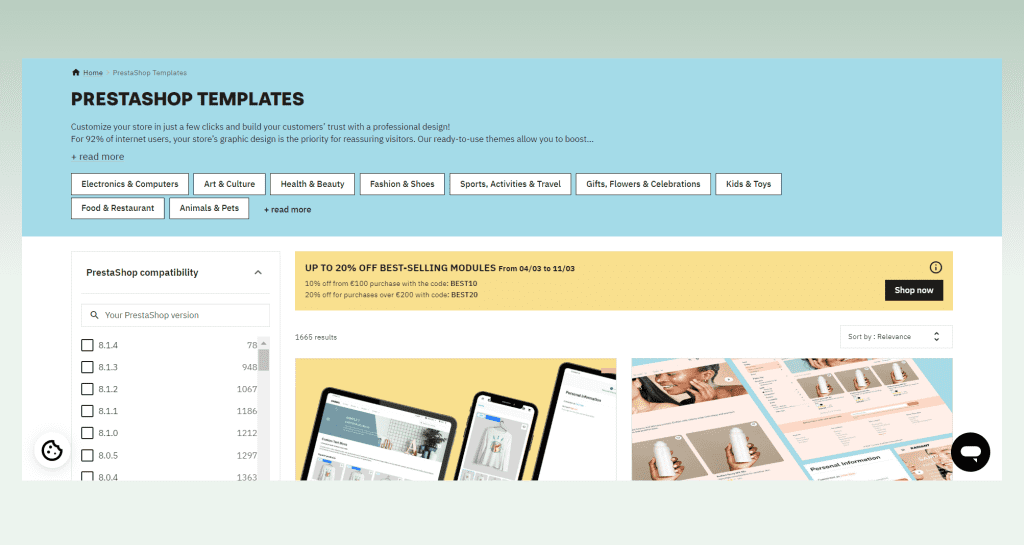
Additionally, PrestaShop offers complete access to the code, allowing for extensive customization and the development of unique functionalities. You can completely change how their online store looks by changing the code underneath using JavaScript or HTML code. PrestaShop can give you ready-to-use themes to help you make more sales by offering your goods a recognizable look.
 |
PrestaShop offers better design & customization
PrestaShop offers more freedom if you prioritize a unique and highly customized storefront. However, Shopify’s easy-to-use themes and customization choices make it faster and more accessible for people who need to be tech-savvy to create a store that looks professional.
PrestaShop wins when it comes to customization, giving users full control over how the store looks and what it can do. Conversely, this freedom has a steeper learning curve and might require more development resources.
Compared to PrestaShop, Shopify’s pre-built styles and easy-to-use customization tools make it faster and easier for anyone, even beginners, to set up a store that looks good.
2.3 Ease of Use
Shopify is known for its easy-to-use layout and section & block features. Setting up a store, adding products, and managing orders are intuitive processes suitable for beginners with minimal technical knowledge.
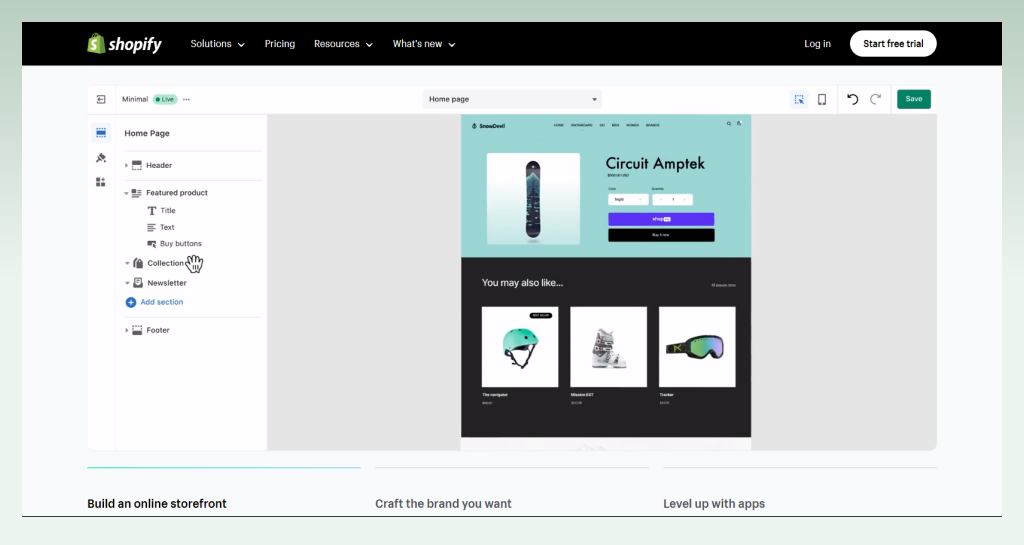
PrestaShop requires more technical expertise than Shopify. Installation, configuration, and customization can be challenging for users without coding experience. For example, you must set PrestaShop up by hand. First, get the most up-to-date version of Prestashop, and then install it on your own using a File Transfer Protocol (FTP) client.
Shopify, on the other hand, is easier to set up. You must pick a plan, make an account, and add a store name immediately.
 |
Shopify is easier to use
If ease of use is paramount, Shopify is the clear winner. Its user-friendly platform lets you focus on managing your business and growing your sales without worrying about complex configurations.
Shopify takes the crown for ease of use. Its intuitive interface, drag-and-drop, and section-and-block features allow you to launch an online store quickly, even without prior experience. PrestaShop offers greater flexibility, but its setup and management demand a steeper learning curve and potentially technical assistance.
2.4 E-commerce Features
PrestaShop and Shopify provide robust eCommerce features, which should be considered when comparing them. Let’s compare Shopify and PrestaShop for inventory control, SEO & marketing, and payment.
2.4.1 Inventory control
Shopify makes adding and managing products in the backend as easy as a hosted eCommerce platform. Store owners can easily add products because everything is clean and organized. You can manually add products to Shopify using the Products section or bulk update using CSV files.
Shopify also has powerful built-in functions to track storage, adjust inventory quantities, and view product inventory history.
As a close competitor to Shopify, PrestaShop has many inventory management features, such as supplier stock updates, syncing third-party systems, smartly restocking inventory, and examining sales and stock levels.
2.4.2 SEO & Marketing tools
Your website or product will rank at the top of search results with good SEO, helping customers remember your brand. PrestaShop and Shopify offer the same SEO features, such as URL modification, canonical tags, and 301 redirects.
Shopify also has many SEO features and marketing tools for your store. Key areas include meta title, meta description, content, headings, image alt text, etc. Excellent SEO support will boost your products’ search rankings.
PrestaShop lets you create coupons, price rules, discounts, special offers, cross-sell, promote, and suggest products. SEO, abandoned cart email, social media integration, and categorical tracking are also available.
PrestaShop also lets you create customer databases and groups to personalize the experience, receive notifications, send default responses, and manage customer service requests. However, you must install modules to start SEO marketing instead of adding built-in features.

2.4.3 Payment process
Shopify and PrestaShop integrate customer credit card payments with multiple payment gates.
The Shopify Payments network integrates card processors into check-out. The benefits of Shopify Payment include:
- There are no extra charges.
- Customers can pay online without leaving your store.
Shopify payments also support store and payout currencies to help merchants close international deals. Apart from Shopify Payment, Shopify offers 100+ external payment gateways like Stripe, Paypal, 2Checkout, etc.
On the other hand, PrestaShop users can choose a third-party payment processor from 250 free options on the marketplace or PrestaShop Checkout. Your customers will not be redirected when paying, and you will comply with all changes, including GDPR.
 |
Shopify provides more advanced eCommerce features
If you need essential e-commerce features readily available, Shopify is the better choice. However, PrestaShop offers tremendous customization potential if you require particular functionalities and have the technical expertise to manage modules.
Shopify offers a clear advantage in terms of built-in e-commerce features. You get a comprehensive suite of essential functionalities out of the box, with the option to expand through apps. PrestaShop offers a broader range of potential features through modules, but managing and configuring them adds complexity.

💡 Read more: Shopify Vs GoDaddy: Unveiling the Best eCommerce Platform
2.5 Apps & Integrations
Shopify has an app store with many different apps that can help you with everything from marketing and shipping to customer service and books. This allows you to add to your store’s features and make it fit your needs.
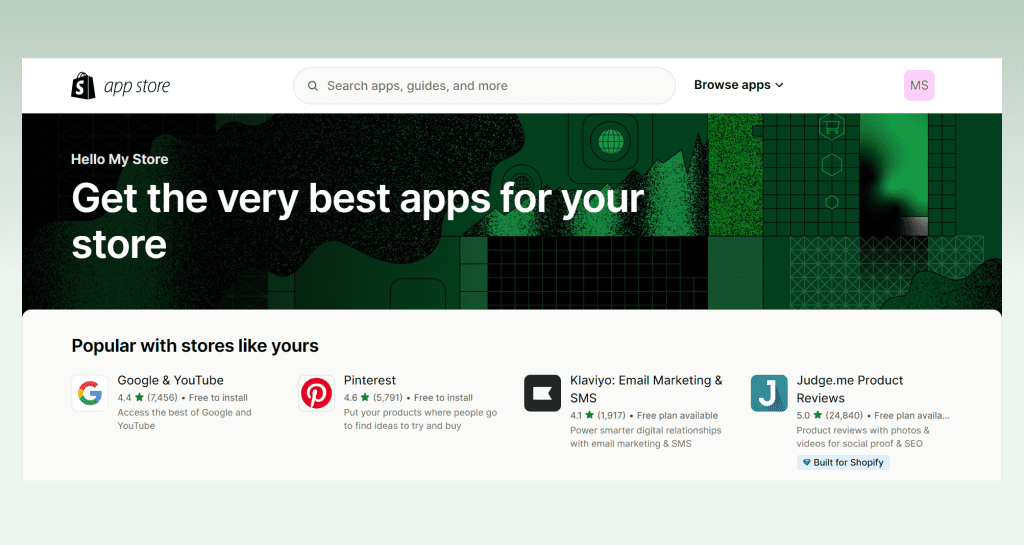
PrestaShop offers a smaller selection of modules than Shopify’s app store. While PrestaShop modules can provide similar functionalities, they often require development costs for installation, configuration, and potential customization.
 |
Shopify’s app store is more diverse
If you value a wide range of readily available extensions to extend your store’s functionalities, Shopify’s app store offers a significant advantage. PrestaShop offers customization options but requires more technical expertise and potential development costs.
Shopify’s extensive app store provides a clear advantage. You’ll find a wider variety of extensions for various needs, eliminating the need for custom development in most cases. PrestaShop offers more customization potential through modules, but managing and potentially developing them adds complexity and cost.
2.6 Scalability
Shopify is highly scalable to accommodate business growth. Shopify’s infrastructure automatically handles increased traffic and sales volume. As your business grows, it’s easy to change your plan to get access to more tools and resources.
PrestaShop requires manual server updates in cases of high traffic. The more traffic your business gets, the sooner you’ll need to upgrade your web hosting plan or move to a private server, which can be complex and technical.
 |
Shopify is the better choice for scaling
If you anticipate significant growth and prioritize a hassle-free scaling solution, Shopify’s automatic scalability is a considerable advantage. PrestaShop offers more control over hosting but requires technical expertise for server upgrades as your business scales.
Shopify shines in terms of scalability. Its infrastructure seamlessly scales to accommodate business growth, eliminating the need for manual server upgrades. PrestaShop offers more control over hosting, but managing high-traffic server upgrades can be a technical challenge.
3. Shopify or PrestaShop: Making the Right Choice
The power is in your hands. Therefore, choosing the right platform, PrestaShop vs Shopify, for your online business is difficult because you must consider many aspects, from budget to technology, flexibility, etc.
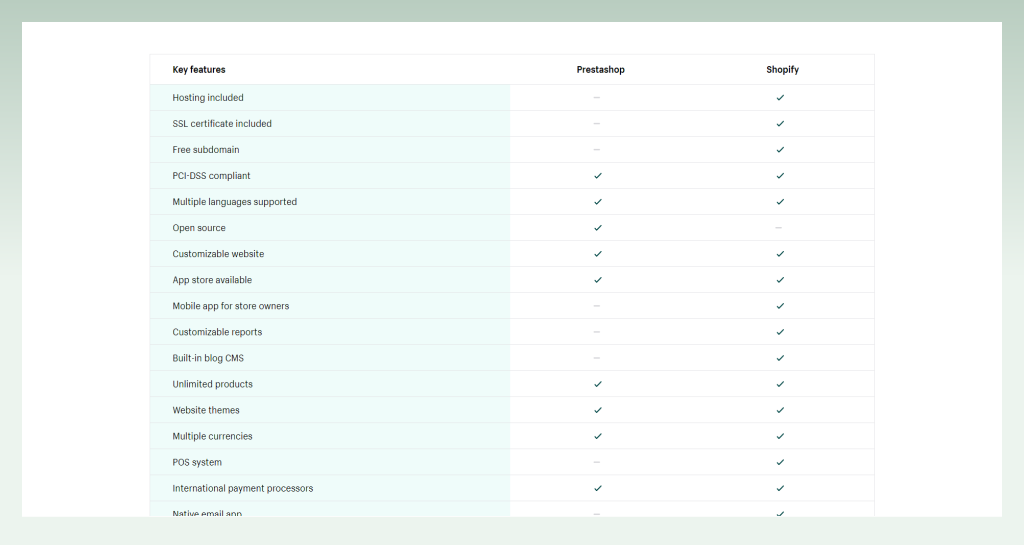
We are here to help you easily make the right choice about “Shopify vs PrestaShop” with our summary.
| Consider Shopify if you | Consider PrestaShop if you |
|---|---|
| ✅ Value ease of use and a user-friendly interface. ✅ Want a predictable monthly cost and an all-inclusive platform. ✅ Prioritize built-in e-commerce features and marketing tools. ✅ Seek out a vast app store to extend your store’s functionalities. ✅ Anticipate significant growth and require a scalable solution. | ✅ Have technical expertise and prioritize high customization. ✅ Want complete control over the software and hosting. ✅ Operate on a tight budget upfront and be comfortable managing your hosting. ✅ Require particular functionalities beyond basic e-commerce features. |
🤔 Stuck between PrestaShop and Shopify? Broaden your horizons! Exploring the best Shopify alternatives like BigCommerce, Wix, Squarespace, and more can open up a world of possibilities and help you find the perfect platform for your needs.
4. The bottom line
The “Shopify vs PrestaShop” battle is not a clear-cut victory for one platform. The best option for you will depend on your needs, budget, and level of technical skill.
Shopify excels in ease of use, built-in features, marketing tools, app integrations, and scalability. It’s an excellent choice for beginners and businesses seeking a user-friendly platform that grows with them.
PrestaShop empowers users with complete control and customization options. It’s suitable for technically savvy individuals or businesses with unique requirements and the resources for development and ongoing maintenance.
By understanding the strengths and weaknesses of both platforms, eComstart can help you choose the e-commerce solution that empowers you to build a successful online store. Read more platform comparison guides & other blogs at eComStart.io if you need more consideration before making the final decision.


